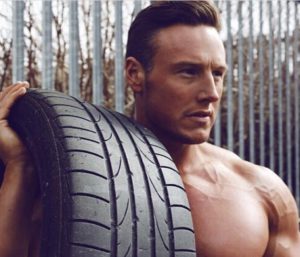For many of your clients, the prospect of exercise is probably more daunting than the actual exercise itself. If they have a job and family to support, it often feels like there are only so many hours in the day – but there’s always time for exercise.
While paying the bills is of huge importance to your clients, looking after their health should be just as high a priority. Not maintaining an active lifestyle can literally be a case of life and death – as we’ll find out.
Whether it’s doing a HIIT workout after work, or taking the stairs instead of the lift, there are countless ways to incorporate exercise into your daily routine. We’ve all heard about ‘marginal gains’ in the workplace and exercise is no different.
In the first part of a two-part blog series, we’ve spoken to two top personal trainers to get their key tips for fitting exercise around work.
‘Fail to plan, plan to fail’: John Clarke, founder of John Clarke Personal Training, Liverpool

John owns his own gym in Garston, Liverpool and has been a personal trainer for 12 years. John has trained Premier League footballers, TV stars and the boxer Robbie Davies Jr, among others. Below are some of his top tips.
Don’t just associate exercise with the gym
Exercise doesn’t always have to be going to the gym and doing repeated sets of 10 – it depends what you want out of it. Whether you want to play badminton or 5-a-side, there are plenty of options available. Businessmen and women in particular play squash, which is very much like a HIIT workout – it works all kinds of muscles if the other player is making you run around a lot.
Another good suggestion is to have work meetings in a gym, whether that’s with a client or colleague – it’s always a good bonding experience and you get the added bonus of exercise. You could go swimming with your colleague after work. The possibilities are endless.
Increase your NEAT (Non-Exercise Activity Thermogenesis)
People often wrongly believe that exercise is purely about sweating and being out of breath, and even people who train regularly think they shouldn’t do any real physical activity on a rest day. The opposite is true – it might sound fairly self-explanatory, but you need to burn calories to increase your NEAT, trim fat and gain muscle. I’m training a boxer at the moment and, on his rest days, we get him doing Low Intensity Steady State (LISS) workouts so that he keeps burning calories.
There are plenty of LISS exercises people can do to improve muscle and joint strength, particularly ones where you’re bearing your own body weight such as standing and walking. For example, you could get off the bus a few stops before you reach work and walk the rest of the way, or walk to the shops instead of driving. Anyone can incorporate these into their day-to-day lives and they’re particularly beneficial for overweight or elderly people.
Understand what is a HIIT workout – and what isn’t
Most people who come to me want to do HIIT (High Intensity Interval Training), but they need to understand what a HIIT workout actually is. People who think they’re doing a HIIT workout often aren’t, which I think is perpetuated by the Body Coach doing star jumps on YouTube.
People doing these kinds of exercises won’t have a high enough heart rate to gain the proper afterburn effects, whereby your body burns calories and builds muscle throughout the day. If your BPM is 120 or below and you’re able to speak freely, you’re not getting the afterburn you want from HIIT and therefore won’t see the desired results.
Ideally, if you’re doing a HIIT workout, your BPM should be 160 – 180 and you shouldn’t be able to hold conversation. I’ll test this by asking people how their day’s going and see how they respond.
Make structured meal plans and abide by the 80/20 rule
Fail to plan, plan to fail. If you go into work and the food there’s not healthy and there aren’t many other options apart from the petrol station down the road, you’re playing catch-up. Your diet should be made up of single-ingredient foods.
Let’s say you had 500 calories of jelly beans on a plate and 500 calories of broccoli on another. You could finish the jelly beans quite easily and probably still have room for another 500 calories. But I guarantee you’d struggle to eat 500 calories of pure broccoli. The point is that vegetables increase feelings of fullness and stop you from overeating.
As a rule of thumb, if 80% of your diet is made up of single-ingredient foods and 20% is made up of ‘pleasure meals’ as I call them, you’re on the right track.
Track your activity levels
I would definitely recommend activity trackers, such as a Fitbit. They’re ideal for setting goals and competing with friends and family members, not just yourself. You can also set up prompts, which are great for increasing motivation as long as you don’t ignore them!
What I’d say is don’t get too hung up on the calories you’ve burned, because these trackers are usually way off. It’s more about how far you’ve gone, how many steps you’ve done, your time – those sorts of things.
Find the article here on Insure 4 Sport on website.






